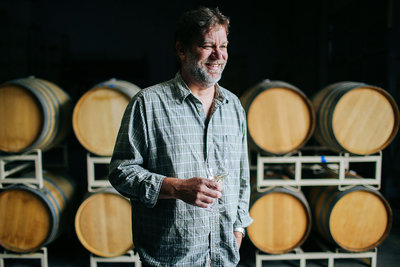
Oregon’s best wine? Seems a silly question, at first. Pinot noir? Pinot gris? Nah. One very wine-savvy professional is ready to offer a rather shocking response: chardonnay.
Say what?
If it’s even partly true that chardonnay rates as one of Oregon’s best wines, the phenomenon could be called a renaissance, a revival, even a re-birth, because Oregon chardonnay had effectively died in the ’80s. And it wasn’t a pretty demise.
I admit that I was among the early victims of California wine marketeers who sold — over-sold, some say — the California style of chardonnay: big, bold, juicy, lotsa oak and butter flavors and enough residual sugar to make a refreshing quaff.
Alan Mitchell, one of the principals of Territorial Vineyards, dubbed those Cal chards “lumberyard wines,” meaning drinking them sometimes tasted like licking a chair leg.
The marketing worked, creating a huge demand; Cal wineries produced and sold millions of cases of oaky, buttery chards. Chardonnay is still America’s most popular wine-grape varietal.
Morgan Broadley (Broadley Vineyards, Monroe, makers of some of Oregon’s best pinot noirs) says “a lot of bad wine got made” in California and in Oregon, which resulted in the reaction dubbed ABC (Anything But Chardonnay). Consumers grew tired of wines that tasted over-oaked and flabby.
It’s generally agreed that Oregon’s growers and winemakers suffered from a clonal problem. The backstory has it that when the post-Prohibition wine pioneers (Lett, Sommer, et al.) were moving toward re-opening Oregon’s rocky slopes to grapevines, they consulted with California viticulture experts and were advised to plant chardonnay clones called 108, Wente and Draper. These were chosen for a number of reasons, in part, Mitchell says, because of yield: The Cal growers had had great success with those clones, which are hugely vigorous and easy to ripen, especially in Cal’s warm Central Valley.
But they weren’t the best clones for the cool, wet climate of western Oregon where, Mitchell says, “you could only ripen it every five years.” The chardonnay wines made from those vines tended to be “green,” acidic and tart, distinctly “hard and unyielding,” in Mitchell’s words.
Debate ensued and still rages in what one wag named “the clone wars,” riffing on the Star Wars films.
Growers also went back to their sources, looking at France’s Burgundy region where pinot noir (red Burgundy) and chardonnay (white Burgundy) grew and ripened side by side. This insight led to the Dijon clone and some very expensive re-planting in Willamette Valley vineyards (growers in Oregon’s warm Rogue Valley were having no problems in ripening the 108/Draper clones and still do well with them).
Connecting to a French clone, while valuable to makers of drinkable chardonnay, seems a bit late, since Oregon’s real French connection has involved the discovery and colonization of Oregon by talented and passionate French winemakers. That process really began when the Drouhin family bought into the Dundee Hills, establishing Domaine Drouhin Oregon (aka DDO, first vintage 2988).
Véronique Drouhin deserves credit for producing some of Oregon’s best chardonnay, the DDO “Arthur.” Dominique Lafon, whom Morgan Broadley calls “the best white winemaker in the world,” has taken Dundee’s Evening Land (founded 2007, a Mark Tarlov project) chardonnays to the acme of excellence.
Oregonians go to France for vines and guidance. The French come to Oregon for opportunities to redefine wine styles. The circle seems to be closing.
But the revival of chardonnay in Oregon still stirs debate. In 2012, Paul Durant (Durant Vineyards, Dayton) and Erica Landon (Walter Scott Wines, Salem), both makers of fine chards, launched the annual Oregon Chardonnay Symposium. Since then, the conversations generated among growers and vintners have spurred changes in vineyard management and winemaking, contributing to ongoing improvements and Oregon’s revival of America’s most popular wine.
Oregon’s best? Yet to be determined. Very good? Taste the results (too many to list here). No doubt remains.